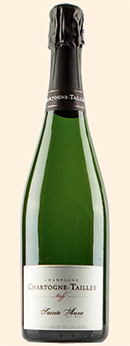Non-vintage champagnes


Roula Khalaf, Editor of the FT, selects her favourite stories in this weekly newsletter.
The beginning of March may not exactly be the start of spring but it does usher in that part of the year when, in the northern hemisphere at least, champagne or a variant thereon is routinely poured at social and nuptial gatherings. So many British residents regard champagne as the standard drink on any occasion at any time of year that the UK continues to be champagne’s leading importer by far.
It is fashionable in professional wine circles to complain about the quality of champagne but I am delighted to report that, on the basis of my selfless tastings on your behalf, the quality and range on offer today seem to be better than ever. This is partly because, in key markets such as the UK and US, champagne lovers can now choose between the well-known, usually high-volume brands which strive for a consistent house style in every year’s new bottling, and an increasing number of “grower champagnes” made by much smaller outfits. In the latter camp, the tendency has been to provide individual lots of wine together with full details of their pedigree: which harvest(s) a bottling is based on; where grapes were grown; and when the bottle was disgorged (separated from the lees of the second fermentation in bottle).
This means that not only can we enjoy a much wider range of champagne flavours and styles, we are also being told much more about what is in the bottle. Even among the bigger brand owners, there is a tendency to give increasing amounts of information on the back label or via codes, albeit sometimes somewhat arcane. (The determinedly upmarket Krug, for instance, now gives a six-digit code on the back of all labels of its luxurious multi-vintage Grande Cuvée, although you arguably need a Bletchley code-breaker, as well as access to Krug’s website, to work out what it means.)
Another welcome development is that champagnes have been getting both older and drier. More sophisticated and curious consumers demand more of the ageing on lees that provides champagne quality, and dryness has come to be viewed as a virtue. To be labelled Brut, a champagne has to have a residual sugar level of less than 12g/l (it used to be 15g/l, although a tolerance of 3g/l is allowed). The non-vintage blend (the sort that constitutes more than 95 per cent of all champagne sold) of the biggest champagne brand of all, Moët & Chandon Brut Impérial, had a sweetness level of more than 13g/l when the current chef de cave Benoît Gouez arrived in 1998. On his watch, not only has the wine become much more refined than it used to be but the residual sugar level has been steadily reduced (as it has at most of the big champagne houses) to about 9g/l today, which means that it definitely tastes dry.
In all wines, sugar is in a delicate counterbalance with acidity: the more acid a wine has, the less obvious its sweetness. Thanks to climate change, grapes in Champagne have been getting riper, which means that average acid levels in grape must have been falling. In the 1990s the average was 8.18g/l in sulphuric acid, whereas in the first decade of this century it had fallen almost 8 per cent to 7.52g/l. It is hardly surprising therefore that there is less need to add sugar to compensate for acid levels that have traditionally been relatively high this far north.
Makers of sparkling wine have an unusually high degree of control over how sweet their wines are because the last winemaking operation before the final cork goes into the bottle is the aforementioned “disgorgement”, which involves expelling the lees of the crucial second fermentation in bottle that gives off the carbon dioxide responsible for the fizz. This leaves a space in the bottle that has to be filled with what was traditionally a mixture of wine and sugar – the amount of sugar, or dosage, being at the winemaker’s discretion, according to how much was felt necessary to counterbalance the acidity while representing the style.
Final residual sugar levels in the much sweeter Demi-Sec category being pushed by some champagne houses could be as high as 50g/l, but at the other end of the sweetness scale there has been a flirtation with adding no sugar at all so that the resulting champagne has a residual sugar level of less than 2g/l and qualifies as a Brut Nature, sometimes called Ultra Brut or Zero Dosage.
At the large family house of Louis Roederer, sweetness levels have been plummeting. Chef de cave Jean-Baptiste Lécaillon reported recently at a presentation of no fewer than nine vintages of the jewel in their crown, the super deluxe Cristal, that average residual sugars have fallen by about 3-4g/l for all Roederer champagnes – although it is worth remembering that bottle age can compensate for sugar. The older the champagne, the less obvious the acidity and the less added sugar is needed. Benoît Gouez, for example, has reduced residual sugar to 6g/l for the 2006 vintage Moët that will be launched in May – only two-thirds of the level in the younger blend that constitutes the non-vintage Brut Impérial. (A level below 6g/l may be labelled Extra Brut.) One of the reasons that dosage levels used to be so much higher was that non-vintage wines were released with less bottle age, so they needed the sweetness to make them palatable. Really young champagne plus no dosage can equal tartness and pain.
Dieters may wish to seek out wines with as little sugar as possible but in a champagne-making context, sugar is far from evil. A little bit of dissolved sugar not only counterbalances the high acidity, it helps to protect the wine from oxidation. Gouez experimented with reducing sweetness levels to 2-3g/l but found that the wines aged too rapidly. Furthermore, if a champagne is given further bottle age after the final corking, as many top-quality vintage champagnes are, sugars will usefully react with the amino acids in the wine, given enough time, to create even more complex flavours.
So the boring message is, as usual, moderation in all things. Even sugar.
Tasting notes on Purple Pages of JancisRobinson.com
Stockists from wine-searcher.com
——————————————-

Well-balanced non-vintage champagnes
The following champagnes seem to have enough bottle age to compensate for their low residual sugar:
● Agrapart et Fils, Terroirs Extra Brut Grand Cru
● Bérèche, Le Cran Extra Brut Premier Cru
● Chartogne-Taillet, Ste-Anne Brut
● Doyard, Cuvée Vendémiaire Extra Brut
● Egly-Ouriet, VP Extra Brut Grand Cru
● Egly Ouriet, Les Crayères Blanc de Noirs Grand Cru
● Larmandier-Bernier, Longitude Extra Brut Premier Cru
● Larmandier-Bernier, Terre de Vertus Blanc de Blancs Non Dosé Premier Cru
● Lassaigne, Cuvée Le Cotet Blanc de Blancs Extra Brut
● Marguet Père et Fils, Rosé Grand Cru
Comments